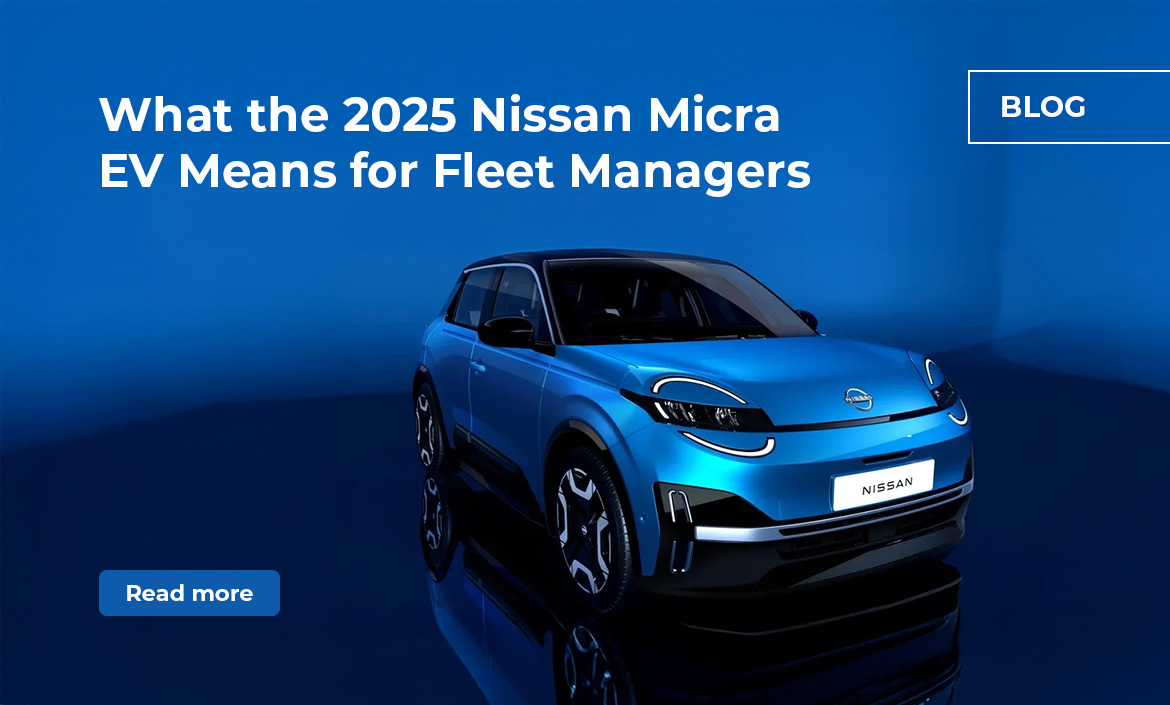The Nissan Micra, a well-established name in UK motoring, is being reintroduced as a fully electric model in late 2025. Compact, capable, and cleverly equipped, the new Micra EV is positioned to be more than just a city car, it’s a forward-thinking option for fleet operators committed to sustainability and cost-efficiency.
Familiar Name, Fresh Direction
This latest Micra combines heritage styling with modern design cues, including sleek LED lighting and clean aerodynamic lines. Built on the AmpR Small platform, shared with the Renault 5 E-Tech, the Micra represents a significant shift in Nissan’s European strategy, reflecting its growing focus on electrification.
Electric Performance That Works for Fleets
The Micra EV will be available with two battery configurations. The entry-level 40kWh battery offers a WLTP range of up to 192 miles and produces 122hp, while the larger 52kWh battery increases that to 253 miles and delivers 150hp. Torque is also improved, with 225Nm and 245Nm respectively. Both versions support rapid DC charging, enabling a 15–80% top-up in approximately 30 minutes.
A heat pump is standard across the range, enhancing energy efficiency in colder months. The addition of Vehicle-to-Load (V2L) functionality allows the Micra to power external devices, such as laptops, power tools or site lighting, via a 240v outlet, which could prove highly practical in mobile working environments.
Driver Technology and Safety Innovation
Inside, the Micra boasts a pair of 10.1-inch screens: one for the instrument cluster and the other for infotainment. The new system features Google built-in technology, including Google Maps, voice assistance and access to Google Play, ensuring intuitive navigation and connectivity for drivers on the go.
Nissan hasn’t cut corners on safety either. The Micra includes ProPilot Assist, offering lane centering, adaptive cruise control and emergency braking. Other systems include Lane Departure Warning, Rear Cross Traffic Alert, Intelligent Speed Assistance, Blind Spot Intervention, and a Driver Monitoring System, helping to reduce incident risk and driver fatigue.
Strategic Benefits for Fleet Managers
From a fleet management perspective, the Micra EV offers compelling advantages. Lower running costs, especially compared to petrol or diesel models, make it a cost-effective addition to fleets. The absence of tailpipe emissions supports ESG commitments, while its compact size makes it ideal for urban driving, home visits, and last-mile logistics.
Driver satisfaction is also likely to be high. The quiet, refined electric drivetrain, combined with user-friendly tech, supports retention and productivity. Meanwhile, the inclusion of V2L provides operational flexibility, particularly in field-based or mobile business roles.
At Toomey Leasing Group, we’ve been supporting UK fleets for over five decades. We understand the challenges of adopting new technologies and the importance of making informed, strategic choices.
Our expert services include full whole-life cost assessments, in-depth fleet risk analysis, driver support programmes and bespoke leasing packages to match business needs. Whether you’re adding a handful of EVs or transforming your entire fleet, we’ll help you plan, implement, and manage the transition.
Looking Ahead
The new Micra is just the beginning of Nissan’s latest product wave, with electric versions of the Leaf, and a new A-segment car set to follow. For fleet decision-makers, this opens up a wider range of electric options backed by trusted brands.
With its blend of practicality, innovation and low operating costs, the 2025 Nissan Micra EV is an ideal entry point into electric mobility. To find out how it could fit into your fleet strategy, speak to the team at Toomey Leasing Group today.
Get in touch for any of your fleet queries:
If your business needs any assistance, with setting fleet budgets, or would like to understand more about what vehicles fit into your fleet budget, get in touch today. Our experts can offer guidance regarding alternative fuel types and whole-life cost analysis.


